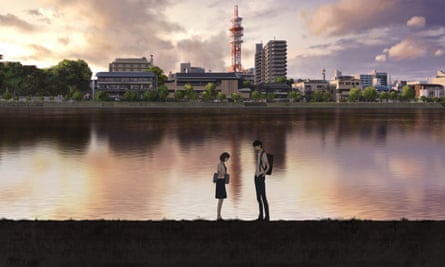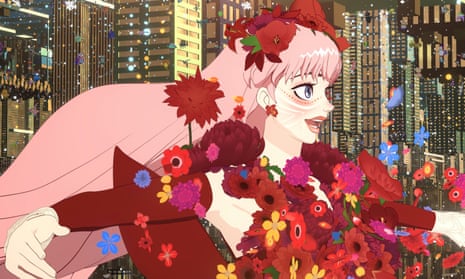Fears about our digital future were not assuaged last October when Mark Zuckerberg released a video trailing the delights of “the metaverse”. The Facebook supremo’s awkward presentation style made it feel like an AI-generated missive from beyond the uncanny valley. Plus, many felt there was something pretty dystopian about an immersive new online world controlled by a corporation with a track record of misinformation spreading, data gathering and disseminating harmful body images.
If we’re feeling paranoid about our metaverse future, it might also have something to do with our movies. Hollywood has rarely met a new technology it couldn’t make seem terrifying and wrong. From virtual reality (the Matrix movies, Tron), to artificial intelligence (the Terminator franchise, Ex Machina, The Mitchells vs the Machines), from social media (Catfish, Eighth Grade, Unfriended) to real-life tech titans like, er, Mark Zuckerberg (The Social Network), we’ve seen enough to put us off ever going online.
All of which makes Mamoru Hosoda’s new anime, Belle, a refreshing alternative. Belle does not gloss over the harmful aspects of digital life such as online abuse, viral gossip and doxing (publicly revealing personal information). But, rather than portraying the online world as a place of cruelty and corporate overreach, it suggests it could be one of sanctuary, even salvation, especially for young people. It is a story about how virtual identities can conceal or reveal people’s hidden facets (as the title suggests, there are Beauty and the Beast parallels). Our hero is Suzu, a lonely, introverted teenager in rural Japan who lost her ability to sing after the death of mother. When she enters the huge online world of “U”, however, she becomes the exact opposite: her secret alter ego is a pink-haired pop goddess with a golden voice and millions of adoring followers.
“There aren’t many directors who have shown an online world in a positive way,” says Hosoda, a bookish, mild-mannered man dressed all in black. “I think I’m a rare example, maybe the only example.” He had never heard the term “metaverse” until after Belle’s release, he says. His inspiration was watching his five-year-old daughter growing up in a world where things like smartphones and social media have always existed. “Us grownups see the internet and we think, ‘This is reality, and that’s not reality,’ but for young people it’s more: ‘This is the real world and that’s another world.’ It’s just as real and just as valuable, and how you behave in that online world is also part of reality. This is the new world they find themselves in, and it’s all about how they create that world for themselves.”

The finer points of U’s tech are admittedly sci-fi. It uses “the latest body sharing technology”, which generates your avatar according to your biometric information. But as a visual representation of what a fully fledged metaverse might look like, Belle is often breathtakingly joyous and agreeably psychedelic. When we first see Suzu in her virtual persona, she is singing a pop song on the back of a huge whale encrusted with speaker cones; it is swimming through what feels like a cross between a floating city and a giant circuit board. Text comments and messages fly through the ether as she sprays virtual confetti at a colourful carnival of avatars. Farther afield in U there are gigantic spherical stadiums, ruined castles, impossibly coloured sunsets over infinite virtual plains. Mark Zuckerberg might want to take a look.
Hosoda has been engaging with digital worlds for more than two decades now. He began his career with the Pokémon-like Digimon franchise, including a short film about an evil virus that consumes data and takes over the internet. It was strictly for kids, but enough to catch the attention of the mighty Studio Ghibli, which in 2001 asked him to direct Howl’s Moving Castle. However, he clashed creatively with Ghibli’s boss Hayao Miyazaki (who eventually directed the movie himself), and Hosoda went his own way. Today he is one of the most successful anime directors in Japan, thanks to hits like The Girl Who Leapt Through Time, Wolf Children, The Boy and the Beast, and Belle’s Oscar-nominated predecessor, Mirai, which premiered at Cannes in 2018.
A significant precursor to Belle was Hosoda’s 2009 movie Summer Wars, which also straddles real and virtual worlds. Half the story is a kind of meet-the-parents teen romcom; the other half is set in a proto-metaverse named Oz, whose hacking threatens to destroy the planet. As with Belle’s U, Oz is a visually sumptuous virtual world: this time a clean, white, pop-art realm filled with rainbow-coloured graphics and characters, designed by celebrated artist Takashi Murakami. To design Belle’s metaverse, Hosoda recruited Eric Wong, a British architect and illustrator based in London. Hosoda saw some of Wong’s mind-bogglingly detailed fantasy cityscapes online and emailed him out of the blue, Wong explains. “It all happened over the internet, which I guess is quite fitting.” Architecturally, where Summer Wars’ metaverse was organised like a giant totem pole, Belle’s U is a vast linear city made up of geometric skyscraper-like forms. Working in the evenings between his full-time job, Wong took inspiration from existing places such as New York City and Central Park, but also from movies such as Kubrick’s 2001, he says.
In its defence, Hollywood has made a few attempts to depict a virtual realm that isn’t a dystopian hellscape. Steven Lisberger’s Tron, from 1982, is still a trailblazer. With its infinite black expanses, angular geometries and neon accents, it made cyberspace look like a 1980s nightclub (the 2010 sequel, Tron: Legacy, doubled down by hiring Daft Punk as DJs). More up to date is Steven Spielberg’s Ready Player One, from 2018, whose story hinges on a virtual leisure universe named “the Oasis”. Visually it is a mishmash of real-world and gaming landscapes, which is probably closer to what big tech’s metaverses will actually look like. The key difference is that Ready Player One is set in the year 2045, when the planet is ravaged by poverty, war and environmental collapse. “These days, reality’s a bummer; everyone’s looking for a way to escape,” its hero tells us.
For all their futurism, Summer Wars and Belle contrast their virtual communities with real-world ones of family and local community. Belle’s location is modelled on an existing village in Kōchi prefecture, whose landscapes and everyday minutiae it renders in loving detail. While virtual populations are booming in the modern digital economy, rural communities are dying out in real life, Hosoda notes. “This is something that’s happening in Japan, maybe in the UK as well. The new online world, the disappearing local communities: both exist side by side.”
To some extent, all of Hosoda’s stories have dealt with people torn between two worlds and two identities – by magic or time travel or digital technology. Invariably, his heroes must resolve this divide, and Belle is no exception. Only by closing the gap between their online and offline identities can the story’s central characters truly move forward. By the same token, Hosoda’s films themselves seem to negotiate the boundaries between fantasy and reality. In light of our looming metaverse future, it’s a theme that becomes ever more pertinent. “I believe things created for films can influence the real world,” he says. “Sci-fi films and novels are a prediction of the future, and they play a role in expressing it. Imagination stimulates the real world.”
Reality is catching up fast, though: “Ten years ago I created an online community of 1 billion people [for Summer Wars], and then Facebook went and got 2 billion-odd users. And so I needed to make the next one bigger: U has 5 billion users.” It is a matter of time before this, too, becomes out of date, he suggests. “I would like to imagine something even further beyond, and share that future with everyone.”
Rather than fearing for what lies ahead in the metaverse, Hosoda is upbeat. “I see the possibility for creating something that is truly global,” he says. “In the real world, we have languages, we have history, we have these walls between nations that are very difficult to overcome. But if those weren’t there, like on the internet, then perhaps there is a possibility to build an online community where everyone can truly belong.”
